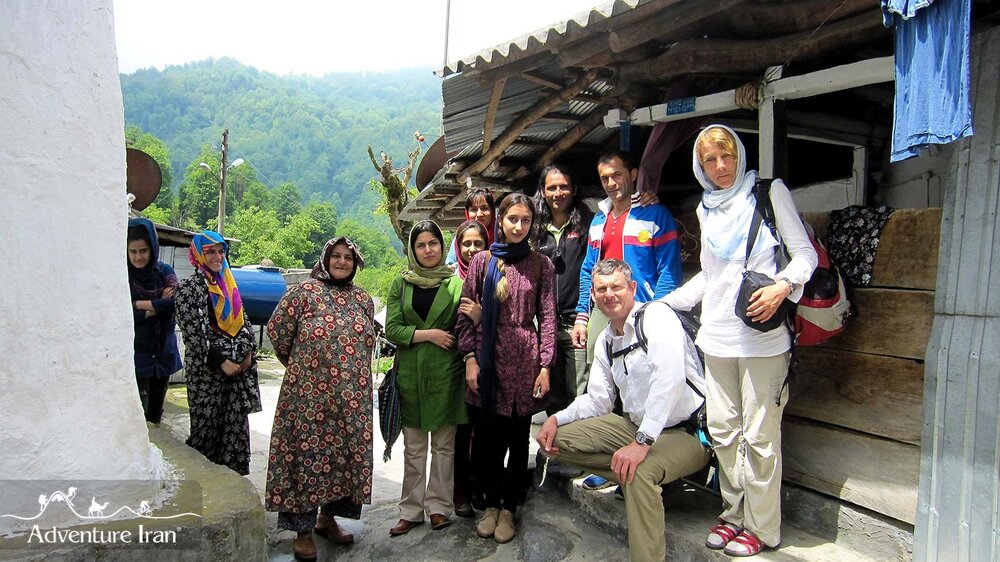Eager for a slice of village life? Iran is your taste

TEHRAN – There are numerous remote and offbeat villages on the Iranian plateau that attract throngs of visitors eager for a slice of village life, natural marvels, and a tradition of cleanliness.
Villages in Iran are stunning examples of what ancient Persians were capable of doing. Many of them have long histories and have been around for four-digit year counts.
These superb settlements represent slices of the history, knowledge, culture, art, and lifestyle of Iran. Iranian villages are the top choices for a weekend gate-away and are much asked for among international tourists.
In recent years, a soaring number of travelers are looking for something different such as spending a day in tranquil countryside, picking fresh fruits, watching rice grow, fishing by the seaside, eating traditional dishes, or even staying with locals.
Moreover, the United Nations World Tourism Organization sees rural tourism as a type of activity in which the visitor’s experience is related to a wide range of products generally linked to nature-based activities, agriculture, rural lifestyle, culture, angling, and sightseeing.
Masuleh rises as one massive interconnected and multi-leveled public space that blends of stairways, narrow alleys, and LEGO-shaped houses to one another. The UN body aims to turn the spotlight on the “uniqueness” of each village to make tourism a means for further development in rural areas. “We want to recognize the uniqueness of each village and showcase the best initiatives to make tourism a means for a better future in rural areas. As we restart tourism, we work to ensure that we leave no one - and no village- behind,” according to UNWTO Secretary-General Zurab Pololikashvili.
Alike agritourism, rural tourism is seen as a win-win situation both for local communities, and post-modern travelers who are in search of unique experiences.
Here is a selection of popular Iranian villages:
Uramanat
Some of the most astonishing villages in Iran have been shaped on the slopes of high mountains and steep grounds. Uramanat village is an example of the unique architecture of these villages, same as Masuleh in Gilan province.
Located in the western mountains of Iran, with houses on top of each other forming a waterfall shape, this striking village is a prominent example of how humans truly integrate with nature and the surrounding environment.
At an altitude of 1,450 meters above sea level, the village enjoys mild weather in spring and summer, and cold weather during fall and winter. Uramanat is a vast and mountainous area of Zagros, which includes the entire south of Kordestan province.
Meymand
If you’re looking for a historical cave village in Iran, halfway through a hot desert located in the heart of Iran, then Meymand is your next destination.
As one of the most spectacular villages of Iran, masses of historical sites and archaeological ruins are within any wanderer’s eye-shot that visits this awe-inspiring village in Iran.
According to sources, Meymand has been continuously inhabited for 2,000 to 3,000 years, making it one of Iran’s four oldest surviving villages.
With rocky caves made of layers of magma stocked on each other over a long time, Meymand is a natural eye-catching dwelling settlement and a gold mine for those interested in Iran’s history and rocky settlements.
Ziarat
Ziarat village is situated in the heights of Alborz mountains with some nice verdant jungles, rural roads, and a small-sized stupendous waterfall at the end of the village that attracts many nature lovers annually.
The best time to visit this historical village is mid-spring and early summer, while the weather is not too hot and you can still feel a few cold breezes brushing against your face in the morning and at night.
Ziarat village can be described as a calm, relaxing, conservative, and ancient environment for everybody.
Kandovan
Kandovan village is one of the most stunning and mesmerizing rocky villages in Iran with unique architectural design, scenic views, and hundreds of limestone caves, still used for shops or houses.
Just like Meymand, houses in Kandovan are tucked in within a mountain environment.
It is said that this attractive village has been partially formed by volcanic remains from strong Mount Sahand eruptions some hundreds of years ago. Also, there is a rocky hotel in Kandovan that has rack-carved rooms and spaces.
Abyaneh
Claimed the title of the red village because of its red soil and its houses, Abyaneh is an ancient Iranian village located 70 kilometers south of the city Kashan in Isfahan province. The village is small and pinched into the slopes of the mountainside. Roofs of some houses are courtyards of other ones, the same way that other villages in Iran like Meymand in Kerman or Masuleh in Mazandaran are designed, the integration of housing into the natural environment on steep slopes.
Dating from some 2000 years ago, the village embraces an exquisite historical establishment, going way back into the past when the Sassanian empire ruled over Iran.
Interestingly, its residents always dress up in their traditional clothing to show their respect for the customs inherited from them by their ancestors.
Masuleh
Home to some of the most stunning landscapes in the country, Masuleh is a one-thousand-year-old stepped village and a major touristic destination in Iran.
According to experts, its history can be traced back to a site that now lies six kilometers northwest of modern-day Masuleh.
Here, nature, architecture, and the community flourish together in northern Iran. This is a village built not by trained architects, but by the inhabitants themselves. Most extraordinary of all, however, is Masuleh’s ingenious use of public space: with no marked boundaries, all rooftops double as courtyards, gardens, and public thoroughfares for the inhabitants on the level above.
Masuleh rises as one massive interconnected and multi-leveled public space that blends of stairways, narrow alleys, and LEGO-shaped houses to one another.
AFM
